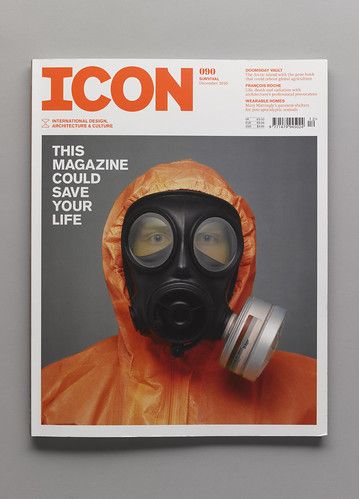Brad Pitt and Damson Idris in F1: The Movie © Warner Bros. Picture / Apple Original Films
The release of F1: The Movie, starring Brad Pitt and Damson Idris, is much more than just a high-profile film. It represents a pivotal moment in the marketing and entertainment industries, signaling a profound shift in how brands must engage audiences. While the movie itself is impressive, it is only the tip of a much larger iceberg — a dramatic transformation in how brands communicate, create value, and build cultural relevance.
Recent market data makes it painfully clear that traditional advertising models are struggling. Shares in major advertising agency holding companies have fallen dramatically, dropping between 15 percent and 44 percent year on year. Meanwhile, the FTSE index has increased by 9 percent, demonstrating that this decline is not due to broad market downturns but industry-specific challenges. At the same time, digital giants like Google and Meta control a staggering 78 percent of the entire UK advertising spend. This concentration highlights the difficulty traditional agencies face in competing with these tech platforms that dominate ad distribution.
Television advertising, once the cornerstone of brand marketing strategies, is losing its efficacy. Audience behavior has evolved significantly, and the interruption-based nature of TV ads no longer captures the attention or engagement of modern consumers. Viewers often multi-task, skip commercials, or engage with secondary screens, effectively disengaging from traditional brand messages. This shift forces brands to reconsider their approach.
The emerging solution to these challenges is branded entertainment — content that entertains, educates, and engages consumers without interrupting them. This is a paradigm shift where brands become creators and owners of original entertainment content rather than just advertisers paying for air time. Extensive new research supports this transition.
Three key reports underscore the urgency and potential of this new model. McKinsey’s groundbreaking studies highlight how brand-produced content significantly increases consumer attention quality, not just quantity. Boston Consulting Group’s report, titled When Traditional Advertising is Dead, provides compelling evidence that legacy media is in decline, and brands must adapt or risk irrelevance. The McKinsey Attention Equation study reveals that focusing on the quality of consumer attention — measured by focus and intent — drives much greater impact than simply chasing exposure metrics.
The foundational problem with traditional advertising is that it interrupts the consumer experience. When consumers are engaged on multiple devices or simply watching content, ads pull them out of their flow, causing disengagement. Paying exorbitant amounts for media placement but not prioritizing creative content results in inefficient spending and poor brand recall.
Boston Consulting Group predicts that by 2035, traditional media will be replaced by a fully digital ecosystem where every company acts as its own media creator. Platforms such as Instagram, YouTube, and TikTok are already primary channels for content delivery, especially among younger demographics. This trend confirms that brands must own their audiences through compelling, authentic content distributed on their own or partner-controlled media channels.
The transformation that Liberty Media initiated with Formula 1 is a textbook case study. Since purchasing F1 for $8 billion in 2017, Liberty Media completely reinvented the brand. The launch of the Netflix series Drive to Survive in 2019 opened up Formula 1 to millions of new fans, especially in the United States and among women — demographics previously less engaged. The crucial insight was that F1 already owned every frame of race footage, which allowed them to repurpose and repackage content effectively. This ability to monetize owned content turned their brand into a media creator and not just a sports promoter.
F1: The Movie goes even further. It innovatively sold sponsorships on race suits and cars within a fictional film, including deals with both traditional F1 sponsors and new brand partners like Expensify and Shark Ninja. These sponsorships generated $40 million in additional revenue beyond the film’s $461 million box office haul, which itself was produced on a $200 million budget. This business model demonstrates how branded entertainment can be both culturally impactful and highly profitable.
Beyond Formula 1, other examples show the power of this shift. British Airways’ new safety video, which combined humor and high production quality, achieved over 2 million views on YouTube before it was even shown on planes. This video accumulated 10 million minutes of engagement and attracted broad media coverage, showing how branded content can resonate beyond its original purpose.
Range Rover’s film, the longest advertisement ever aired on British TV, accumulated over 18 million views on YouTube alone. This translates to approximately two million hours of viewing time, equivalent to 240 million traditional 30-second commercials. More importantly, viewers sought out this entertainment voluntarily and engaged with it on their own terms.
From an economic perspective, branded entertainment is accessible. Producers report that many brands now invest $100,000 or less per project, which is a fraction of traditional advertising budgets. These projects provide brands with genuine creative ownership and control. According to McKinsey, ‘content lovers’ make up 13 percent of consumers and spend 2.4 times more on content-related products and services than average consumers. These highly engaged segments represent a valuable target for premium branded content.
The attention economy is shifting from volume to quality. Research shows that consumers who pay focused, intentional attention are more likely to spend, engage, and form lasting brand relationships. This challenges the long-standing belief that reach alone drives success. Instead, brands must create meaningful, authentic content that aligns with consumer values and lifestyle.
Authenticity has become non-negotiable. Consumers are increasingly wary of overt advertising and want brands to demonstrate genuine understanding and connection. Narrative-driven, unscripted, or semi-scripted formats win over traditional promotional spots. This is evident in F1: The Movie where the storytelling and authenticity of the brand’s relationship with its fanbase drove the film’s success.
The future of advertising is premium content production that can compete with Netflix, Amazon, or Apple for quality and entertainment value. For example, BMW’s Pikes Peak Challenge documentary features cinematic storytelling with high production values, positioning the brand not just as a car manufacturer but as an aspirational lifestyle entity. Partnerships with established media professionals are becoming essential as brands blur the lines between marketing and media creation.
The brand-talent relationship is also transforming. By becoming production partners and co-creators, brands can now work with high-caliber talent who were previously inaccessible due to cost or lack of creative freedom. This enables innovative, high-quality content that stands apart from traditional advertising clutter.
Measuring success in this new landscape also requires a rethink. Traditional immediate conversion metrics do not capture the long-term value of engagement and cultural impact. The McKinsey attention equation provides a more nuanced framework, showing that increased consumer focus leads to higher spending over time, validating investment in quality content.
Looking forward, it is predicted that within five years, half of all premium television content will involve brands from the outset. This shift is driven by rising production costs and shrinking advertising budgets. Streaming platforms are eager to partner with brands willing to invest in authentic, high-quality entertainment that speaks directly to consumers.
The opportunity for every brand is clear. In an age where consumers have unprecedented control over what they watch and when, brands must evolve from advertisers into storytellers and creators of original entertainment. Those who fail to do so risk becoming irrelevant in an attention economy that rewards creativity, authenticity, and cultural impact.
F1: The Movie is a landmark project that demonstrates the potential of branded entertainment to change the game. Yet it is only the beginning of a vast transformation that will touch every brand and every market. The question for marketers and business leaders is not whether to adapt but how quickly and effectively they can embrace this new reality.
In this evolving landscape, brands that become creators of premium entertainment content will build deeper relationships, generate sustainable ROI, and drive cultural influence in ways traditional advertising simply cannot match. The future is content creation, not interruption. And that future is happening now.










